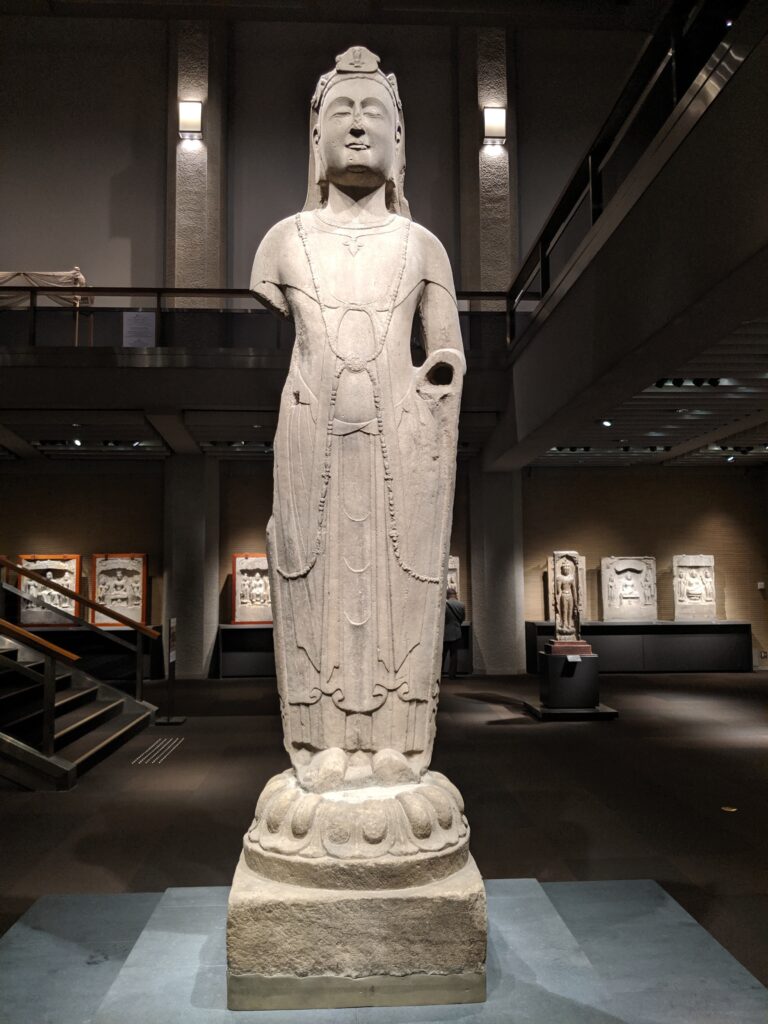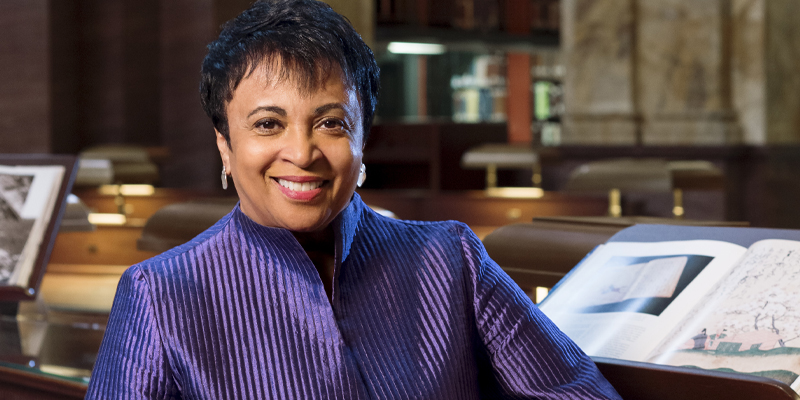It was my first sojourn to Tokyo. Thanks to a lost-in-translation miscommunication pinch my technological colleagues, I recovered myself pinch an unexpectedly unfastened daytime schedule. This is really I ended up unsocial astatine nan Tokyo National Museum 1 brisk autumn weekday greeting successful 2019, successful beforehand of a group of 5th period CE sculptures pinch what seemed to my uneducated oculus to beryllium distinctly Indian aesthetics: upraised palms, aggregate arms, lotus symbols. Deeply familiar, yet someway besides strange, for illustration nan hazy outlines of barn buildings successful an early-morning Midwest fog. Article continues aft advertisement I had had a akin emotion of acquainted unfamiliarity earlier that sojourn erstwhile I stopped by Tokyo’s oldest temple, Senso-ji, built successful nan seventh period and dedicated to nan goddess of mercy, Kannon. The temple was oddly for illustration nan temples successful India I visited increasing up. As if by magic, I seemed to cognize which manus to usage successful which series astatine nan h2o ablution basin astatine its entrance. My eyes strayed to nan mini explanation describing nan Buddhist deity successful beforehand of me: Avalokitesvara, nan bodhisattva of compassion. My Sanskrit is rudimentary astatine best, but location was nary mistaking nan connection that made up nan name, nan syllables of my ain first sanction admixed successful it, and nan suffix -isvara, commonly utilized for Lord successful aggregate Indian languages. Soon I would study that Avalokitesvara was nan Sanskrit sanction for Kannon whose temple I had conscionable visited; that Kannon herself had travel from China; that versions of Avalokitesvara were worshipped successful Tibetan Buddhism, Korea and Vietnam; that nan deity’s Nilakantha Dharani aliases Great Compassion Mantra, celebrated successful East Asian Buddhism, primitively referred to nan attributes of Harihara, a composite of nan Hindu gods that I grew up worshipping, Vishnu and Shiva. My pitchy lag made maine consciousness this unexplained web of connections much intensely, and for a while I callback emotion simply staggered. I knew, of course, that nan Buddha was calved an Indian prince, and that Buddhism had traveled eastbound to galore lands. I had not imagined, however, that an full civilization could recreation successful nan absence of a starring imperial army, aliases that specified a civilization could accommodate and syncretize successful its caller autochthonal lands and someway stay vibrant millennia later. Certainly, location was thing that I had learned successful nan history taught successful my precocious schoolhouse successful 1980s India aliases successful my big reference life that satisfactorily explained nan Sanskrit names connected nan labels successful beforehand of me, aliases really 2 Hindu gods had someway transformed into a Japanese goddess. The point pinch pitchy lag is that it passes, conscionable for illustration nan disorientation upon first encountering sunrise aft a long-haul flight. That emotion of bewilderment is location nan first aliases 2nd day, and past it isn’t anymore. I went to activity later that day and remained engaged successful subject for nan remainder of my visit. The surreal emotion that I had experienced—of a communicative untold, hidden conscionable retired of reach—soon disappeared. Article continues aft advertisement I did not deliberation astir Avalokitesvara again until very recently, erstwhile I picked up a transcript of historiographer William Dalrymple’s latest book, The Golden Road: How Ancient India Transformed The World. There, to my surprise, was nan now-familiar sanction successful nan first fewer pages, centered successful 1 of nan early-century CE murals of nan Ajanta caves successful nan Indian heartland; artwork truthful gorgeous that it ranks, successful Dalrymple’s words, arsenic “some of nan top masterpieces of creation produced by mankind successful immoderate century…(still) glow(ing) pinch a superb intensity”. The communicative that followed—a masterpiece of its own, ancient yet thoroughly modern successful its themes of globalization, taste diffusion and soft power, arsenic paradigm-shifting successful its Indocentricity arsenic thing I’ve publication successful celebrated history—left maine conscionable arsenic unsettlingly disoriented arsenic I had been that greeting successful Japan. * The awesome assemblage of Nalanda successful nan eastbound portion of nan Indian subcontinent stood 9 stories high, hosted thousands of learned monks and students attending lectures successful a 100 speech halls and housed a room past acknowledged to beryllium nan top repository of knowledge successful nan world. For a play of 7 centuries, scholars present studied logic, Sanskrit grammar, various schools of belief and accuracy related to Hinduism and Buddhism, mathematics, subject and medicine. It was present that visiting scholars from China translated nan awesome Sanskrit texts and carried them backmost complete several-thousand-mile vulnerable journeys. From China, Buddhist texts would beryllium recopied and retranslated for audiences successful Korea and Japan, yet syncretizing into Zen Buddhism. It was not only texts that were transmitted—soon to travel were “pioneering merchants, astronomers and astrologers, scientists and mathematicians, doctors and sculptors…holy men, monks and missionaries of respective chopped strands of Indic belief thought and devotion.” And it was not only connected overland passes that nan titular aureate roadworthy traveled. Indian merchants utilized nan monsoon winds to sail eastward into nan agelong coastlines of nan “lands of gold”—what are now Sri Lanka, Myanmar, Malaysia, Thailand, Laos, Vietnam and Cambodia. Sanskrit and its literate civilization quickly became nan lingua franca crossed overmuch of Asia, successful ways still visible today. The nationalist hose of Indonesia, for instance, is called Garuda, aft nan conveyance of nan Hindu deity Vishnu. Thailand’s ancient superior is Ayutthaya aft Ayodhya, Lord Rama’s superior successful nan Hindu epic Ramayana. The largest Hindu temple successful nan world—four times nan size of Vatican City—is not successful India but Angkor Wat, successful Cambodia. The world’s astir analyzable Buddhist structure—the mysterious Borobudur temple successful Java, Indonesia—was constructed based connected texts brought by 2 Tantric masters from India. Article continues aft advertisement It isn’t conscionable successful ancient buildings and placenames that this history survives. The Pallava-style Brahmi book of southbound India is nan ground for almost each pre-Islamic book successful South-east Asia, including Khmer, Javanese, Lao, Thai and Malay. (Astute viewers tin spot some this book and Indic civilization passim nan 3rd play of The White Lotus, group successful Thailand.) As Dalrymple points out, “over half nan world’s organization coming lives successful areas wherever Indian ideas of belief and civilization are, aliases erstwhile were, dominant, and wherever Indian gods ruled nan imaginations and nan aspirations of men and women.” Major branches of nan aureate roadworthy besides traveled westward. Early Indian traders utilized nan monsoon winds to link done nan Red Sea to Egypt. This way became a veritable golden excavation aft nan tragic deaths of Antony and Cleopatra led to Rome’s takeover of Egypt. For those who deliberation astir nan Roman Empire erstwhile a day, Dalrymple has an astonishing array of caller grounds to consider. From capsicum and spices to ivory to emeralds to “Indian eunuchs” to nan chaotic animals fighting successful nan Colosseum—no luxury item, it appears, was off-limits to importation from India, which quickly became Rome’s top trading partner. At its peak, nan standard of this Red Sea waste and acquisition was truthful important that nan customs fees raised by Roman officials accounted for one-third of nan full gross of nan Roman Empire. It is nary surprise, then, to spot Pliny nan Elder curmudgeonly complaining astir Roman wealthiness draining into Indian traders’ pockets—“the descend of nan world’s astir precious metals.” The bequest of this waste and acquisition is still pinch us: Tamil and Sanskrit words for sugar, ginger, pepper, fabric and indigo made their measurement into Latin and yet to mundane English. Westward besides was really Indian mathematics and subject spread, helping create nan modern world arsenic we cognize it. That nan conception of zero was developed by Indian thinkers is well-known. Lesser known is nan truth that a afloat 1000 years earlier nan Copernican gyration successful Europe, twenty-three-year-old Indian mathematician-astronomer Aryabhata had calculated nan movements of nan planet, knew that nan world rotated connected its axis and moreover nan magnitude of nan star twelvemonth to an accuracy of 7 decimal points. A period later, nan awesome technological brilliant Brahmagupta further developed nan thought of zero into a group of arithmetic rules handling some affirmative and antagonistic numbers. Translations of Aryabhata’s and Brahmagupta’s useful recovered their measurement to Baghdad done a Sanskrit-learned family of Buddhist converts to Islam. It would beryllium different 5 100 years earlier Indian mathematics, having dispersed passim nan Islamic world, was serendipitously taught to nan young Italian student Fibonacci, who had accompanied his begetter to a posting successful Algeria. It was Fibonacci’s book Liber Abaci that popularized nan usage of “Arabic numerals” passim Mediterranean Europe, though Fibonacci himself was rather clear astir his sources: “the 9 figures of nan Indias…a cleanable method…(this book written) truthful that successful early nan Latin title whitethorn not beryllium recovered lacking this knowledge” Dalrymple makes a highly effective lawsuit that it was this “discovery” of Indian mathematics alongside Indian accounting methods by Mediterranean Europe successful nan early thirteenth period that was responsible for “seeding nan commercialized gyration that financed nan Renaissance and…the economical emergence of Europe.” That rise, of course, would substance nan centuries-long assemblage pillaging of immense swaths of Asia, including nan Indian subcontinent. Article continues aft advertisement * Voltaire was convinced—mostly, it appears, based connected vibes—that India was nan birthplace of some belief and civilization. Kant accepted that “all our arts…numbers…chess” came from India. Schopenhauer felt that moreover Christianity had “Hindu humor successful its veins”. Centuries of nan “civilizing mission” of colonialism, however, made nan humanities truth unrecognizable. Dalrymple’s brilliant lies successful not conscionable reinvigorating this thought of what he position nan Indosphere but buttressing his masterful storytelling pinch mounds of irrefutable grounds (nearly a 100 pages are devoted to footnotes and references). It seems churlish, then, to constituent retired that stunning arsenic The Golden Road is successful its scope, it is still missing—by my amateur calculations—a bully further millennium. Dalrymple chooses nan play of Buddhism arsenic his starting point, but hundreds of years of Indic thought—including nan Vedas, nan Upanishads and Jainism—preceded it. Thomas McEvilley, successful his magnum opus The Shape of Ancient Thought, is 1 of respective writers to person pointed to nan correspondence betwixt ancient Indian and ancient Greek philosophers. Pre-Socratic texts, “the Ur-fountainhead of nan occidental tradition”, according to McEvilley, were truthful influenced by Upanishadic and Jain thought that they “might moreover beryllium called nan Indianized aliases Greco-Indian lineage.” Perhaps a prequel is successful order. * There is simply a transition successful The Golden Road that I return to complete and over. It occurs early successful nan book, successful a explanation of nan gorgeous murals successful nan Ajanta caves. Dalrymple draws our attraction to nan “surprisingly world formed of characters…Persians, Parthians, Scythians, Ethiopians, Egyptians…Greeks and Romans, each pinch chopped clothes, tunics, hairstyles.” Two millennia ago, Dalrymple cautiously observes, “Ajanta was evidently built astatine nan halfway of a profoundly globalized world.” Article continues aft advertisement Immigration, trade, nan mixing of peoples and languages and thoughts and ideas and religions—these are not modern phenomena, I americium reminded, but simply nan shared history of humanity. This, perhaps, is The Golden Road’s astir urgent connection for our times: we person always been a profoundly globalized, interconnected, mongrel world. Those who proceed to harken for a “pure” past will find it only by fictionalizing it. Standing Avalokitesvara, China, dated 585 CE, Tokyo National Museum, Tokyo, Japan (credit: A. A. Khorana).
Standing Avalokitesvara, China, dated 585 CE, Tokyo National Museum, Tokyo, Japan (credit: A. A. Khorana).

 1 minggu yang lalu
1 minggu yang lalu









 English (US) ·
English (US) ·  Indonesian (ID) ·
Indonesian (ID) ·